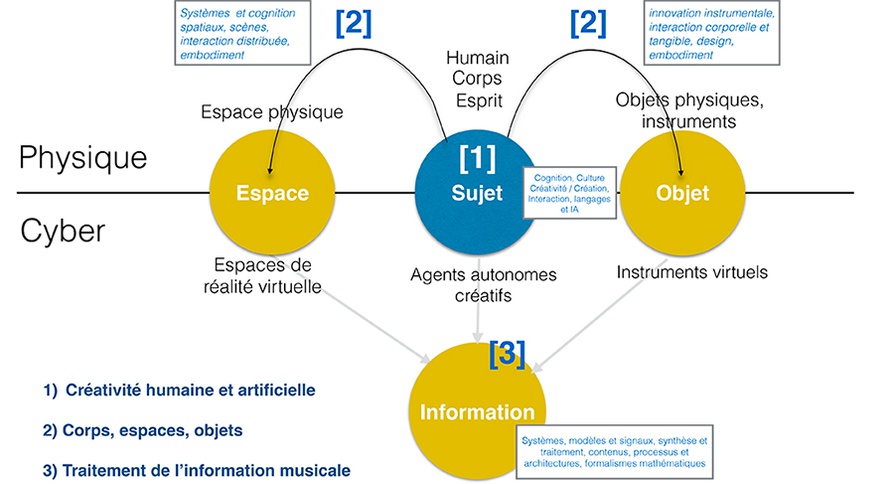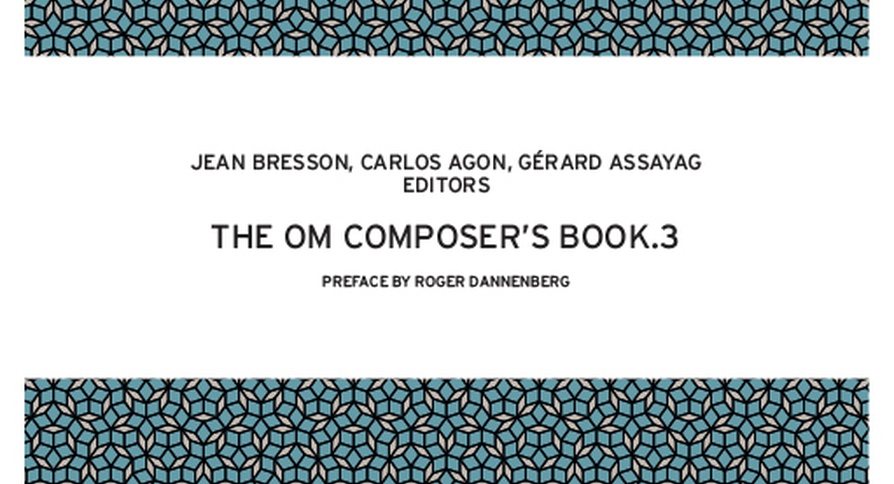
Gérard Assayag a dirigé le laboratoire de recherche Sciences et technologies de la musique et du son (sous tutelles de l’Ircam / Ministère de la culture, du CNRS et de Sorbonne Université) de 2011 à 2017, et il y dirige l’équipe Représentations musicales, qu’il a fondée en 1992 et qui a été constamment déterminante depuis dans la définition des axes de recherche musicale de l’Ircam.
Ses intérêts de recherche sont centrés sur les questions de représentation de la musique, y compris le langage de programmation, l’apprentissage automatique, la programmation visuelle et de contraintes, la musicologie computationnelle, la modélisation musicale et la composition assistée par ordinateur. Dans son équipe, Gérard Assayag a conçu avec ses collaborateurs les logiciels OpenMusic et OMax, deux logiciels de recherche musicale et de création qui ont acquis une réputation internationale et sont utilisés dans de nombreux pays pour la composition, l’analyse et l’improvisation assistées par ordinateur.
Gérard Assayag est co-fondateur de l'Institut Collegium Musicae de Sorbonne Université et a participé à la création du du Sorbonne Center for Artificial Intelligence (SCAI) dont il a défini en grande partie l'axe Humanités Numériques. Il est co-fondateur de la Société Française d'Informatique Musicale (AFIM), la Society for Mathematics and Computation in Music (SMCM) et son organe, le Journal of Mathematics and Music (JMM). Il a aussi été responsable du master ATIAM, une formation proposée par Sorbonne Université en partenariat avec l'IRCAM. Il est membre des comités de rédaction du Journal of Mathematics et du Journal of New Music Research (JNMR). Il a organisé ou co-organisé le « Forum Diderot, Mathématique et Musique » pour l' European Mathematical Society en 1999 (dont l'annniversaire sera célébré par un workshop à Singapour en 2021) ainsi que plusieurs conférences internationales, dont la première conférence Sound and Music Computing 2004, la 3ème conférence Mathematics and Computation in Music en 2011 et les conférences Improtech Paris – New-York 2012, ImproTech Paris-Philadelphie 2017 et ImproTech Paris-Athina 2019 sur l’improvisation et les nouvelles technologies, ainsi que le workshop international Mathemusical Conversation à Singapour en 2015.
Gerard Assayag a été co-éditeur de plusieurs numéros spéciaux de revues scientifiques telles que JNMR ou Soft Computing, ainsi que de livres tels que Mathematic and Music (Springer-Verlag 1999), The OM Composer's Book I, II & III (Delatour 2006-2016), New Computational Paradigms for Computer Music (Delatour 2009), Constraint Programming in Music (Wiley 2012), Mathemusical Conversations (World Scientific 2016).
Gérard Assayag a défini, à travers des publications théoriques et des technologies populaires telles que OpenMusic et Omax, le concept d'interaction symbolique pour rendre compte du dialogue musical riche et polyvalent entre les machines et les humains, qui traverse plusieurs niveaux et échelles d'information, du signal acoustique aux structures symboliques et cognitives. Ses conceptions évoluent actuellement vers l'idée généralisée de co-créativité dans les systèmes cu-yber-humains, visant à une nouvelle génération d'interaction artistique entre l'homme et la machine.
Pour en savoir plus, cliquez sur les liens :
Sur la co-créativité Modélisation de l'Improvisation MOOC Recherche Musicale
Workshop - Festival Improtech VIDEOS
Equipe Représentations Musicales RepMus (nouvelle page)








